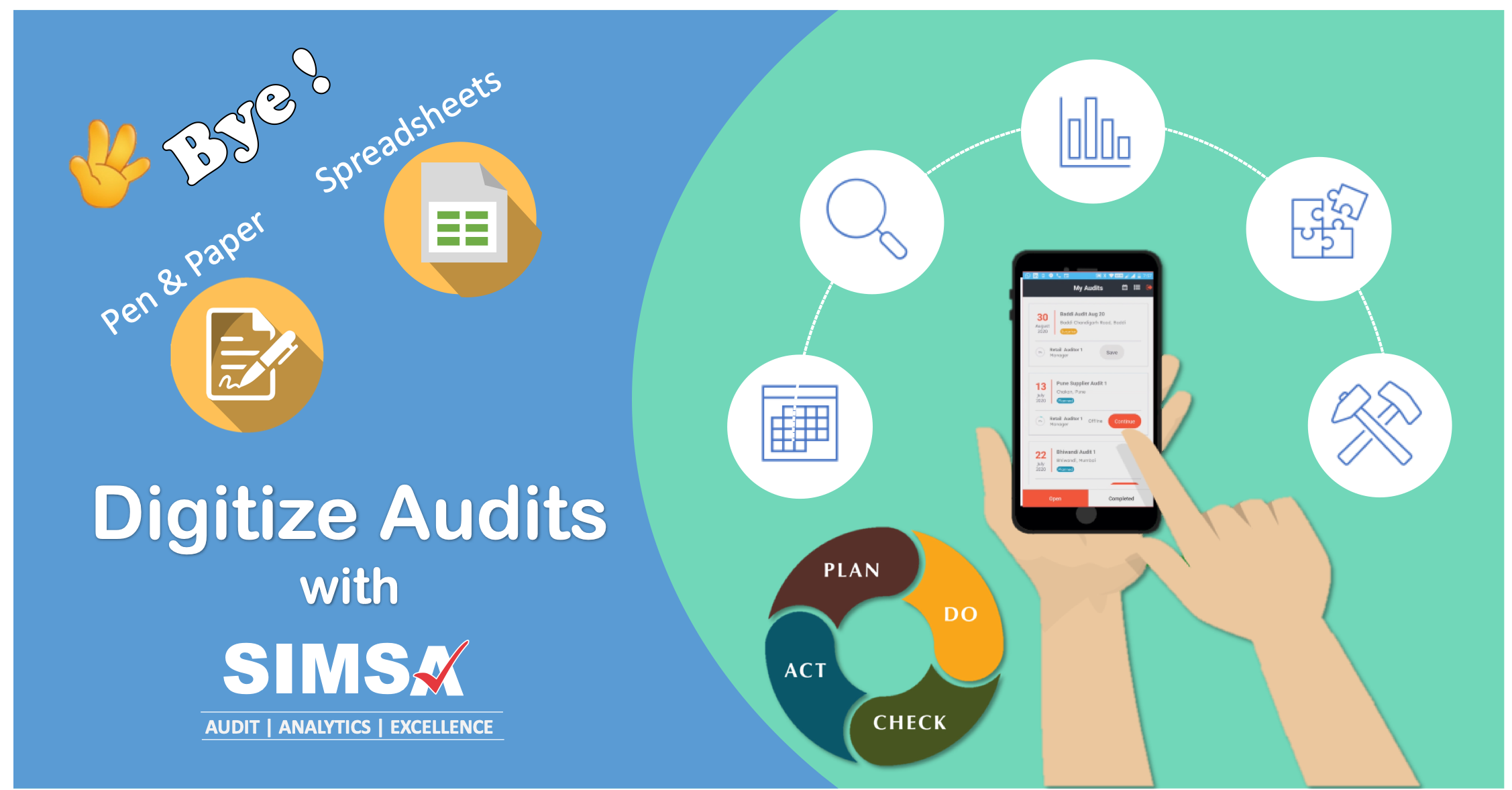Sales Channel Audit – Key to Customer Success
section-ed7d92c
Sales Channel Audit - Key to Customer Success
The network of sales channel partners not only provides a conduit for the flow of products to the end customers but also enables implementation of various sales programs. Imagine if the conduit is leaky or damaged, do you think your end customers would be satisfied? Which option is better - repair the reported leakages or proactively prevent the leakages?
Often the channel partners are treated as the money making machine. The sales is pushed through the network, irrespective of its capacity and capability. Sooner or later the cracks in the channel network start to appear resulting in leakage of revenue, efficiency and even compliance risks in many cases. A company needs to pay as much attention to the health of the sales channel as to its own business.
Role of Sales Channel Audit
A well structured sales channel audit provides a basis for the health check of the channel. It functions as a documented record of all your sales channels processes, operations, assets and compliances. It helps to identify the bottlenecks and roadblocks for increasing your sales, improving efficiencies and maximising the ROI for the channel partners. The channel audit highlights what you do well and areas where you can improve. By focusing on those areas of improvement, you gain a significant advantage over your competitors.
The key benefit of the sales channel audits are:
- Growing your market by identifying unaddressed geographies & segments
- Benchmarking your sales processes, programs and strategies with competitors
- Improving the processes & capabilities of the channel partners to grow the sales faster
- Ensuring compliances to the regulatory requirements and company's policies
- Providing a better ROI to the channel partners as compared to the competitors
Approach and Scope of Sales Channels Audit
It is very important to define the scope of sales channel audit. There are various approaches for defining the scope:
- Comprehensive: This approach requires covering all processes and operations of the channel partners. It provides a thorough and in depth understanding of the effectiveness of the process, gaps and potential improvements. However, these audits are resource and time intensive. It may also lead to interruptions in the operations impacting the sales. This approach is useful if a company does the channel audit first time or once in 2-3 years.
- Risk-based: This approach priorities the processes based on the risk assessment or based on the reported issues from the sales team or customers. It helps to focus on the areas that are of prime concern to the company and therefore has a better return on the investment in resources used for the audit. It also allows to conduct the audit more frequently and better attention from all the stakeholders for taking the corrective actions.
- Differentiated Approach: This approach requires segmenting your channel partners based on the value or geography. Each segment of channel partners may have a different set of processes and therefore the risks involved. A differentiated approach leads to even sharper focus and better insights.
The right approach would depend on the maturity level of a company in the channel partners management. At the low level of maturity, a comprehensive approach is preferred and as the understanding of the channel improves, one can move to the risk-based or differentiated approach.

The next most important aspect of the channel audit is to identify the scope, based on the approach adopted. Typically, the areas that are included are:
- Market Coverage and Service: A channel partner who is interested in short term profit may not focus on the markets or customers that are growing but not yet profitable, leaving gaps for the competitors. Also, ensuring the complete assortment and placement of the products on the retail shelf may not adhere to the laid down norms or policies. The common gaps observed in this area are:
- Missing out certain outlets or visit beats to the outlets
- Improper placement of the products on the shelves
- Not having assortment according to the norms for a category of outlet
- Out of Stock products ordered by the retailers
- Product damages in the outlet
- Poor merchandising
- Incentives, Rebates and Claims: Lot of leakage and abuse of money budgeted for incentives & rebated may happen if proper controls are not in place. The key control gaps observed in this area are:
- Claims and payments made on sales to ineligible end-customers
- Products procured from unauthorised sources
- Products claimed ineligible for volume rebates
- Claims on products subsequently returned
- Product claimed across multiple programs
- Inappropriate use of Market Development Fund
- Duplicate claims
- Internal Processes: The effectiveness of internal processes of the channel partners has a direct impact on the outcomes. However, the channel partners may not have the skilled resources, a great infrastructure to ensure or technology to enforce process and quality standards. It results in inefficiencies, wastage and losses, which in turn leads to lower ROI for the channel partner and bottlenecks for the sales growth. The common control gaps observed in this are:
- Obsolete or expired stocks due to lack of adherence to FIFO or FEFO policies
- Inventory losses on account of lack of cycle counting process
- Poor hygiene and upkeep within the premises and surroundings
- Poor handling and Product damages
- Inadequate storage infrastructure
- Inadequate record keeping, checks & controls
- Lack of system for handling customer complaints
- Improper record keeping, documentation and MIS
- Compliances: There are whole of compliances that are required for doing business in a country or a region. The compliances include the legality of place from which the channel partner is operating from, tax compliances, human resource compliances, storage compliances, regulatory compliances with respect to the specific products e.g. pharmaceuticals, food, hazardous goods etc. The problem is that many channel partners are either not aware or not updated on various compliances. It could not only have an impact on the continuity of the business of the channel partner but also the company's image & business continuity.
- People / Sales Force Management: A sales business is as successful as the quality of its sales resources. Due to various constrains, most channel partners don't have the most skilled resources. Also, the employee churn is also high leading to gaps created due to learning curve. Most channel partners do not have structured training programs or modules that can help to bridge these gaps. The key areas to be checked for people management are:
- Process for selecting, onboarding and training new employees
- Standard Training modules for training on product knowledge, systems & processes, selling skills, communication skills, IT skills etc.
- Employee welfare and engagement programs
- Handling of employee grievances & complaints
Structuring an Effective Channel Audit Program
Structuring a channel audit program requires strategising, planning and execution capabilities. A well thought through program delivers better outcomes as compared to the ad-hoc audits. It should not be merely a paper exercise. The key steps are:
- Classify your channel partners based on the revenue, sales region and product portfolio.
- Map the risk profile for each category of the channel partners.
- Based on the risk profile decide the scope and frequency of audits. Prepare a calendar of various audits.
- Communicate the audit plan with the stakeholders.
- Identify the audit resources required for conducting the audit and determine whether these have to be outsourced.
- Prepare checklists covering the specific areas as determined in the scope of each audit. Remember, each checklist has to be tailored to the risks identified for each category of channel partner.
- Get the channel partners' buy-in and integrate them in the audit program.
- Have a robust mechanism for planning corrective actions for the gaps identified in the audit and tracking of the deadlines for each action point.
- Use a technology platform to manage the end to end audit workflow and provide complete visibility on the gaps and corrective actions to both you as a customer and the suppliers. The technology helps you to save time, efforts in putting together and tracking the information and it at the same time it ensures consistency throughout.
- As the improvements are realised, review the audit program i.e. frequency, checklists etc.

Conclusion:
The channel partners' audit is a mean to de-bottleneck sales processes and prevent leakages of revenue & efficiency. A differentiated and risk based approach should be adopted for a sharp focus and targeted improvement. A structured process should be instituted for sustainable and continuous improvements. The use of modern technologies to automate the workflow along with analytics is highly recommended.


